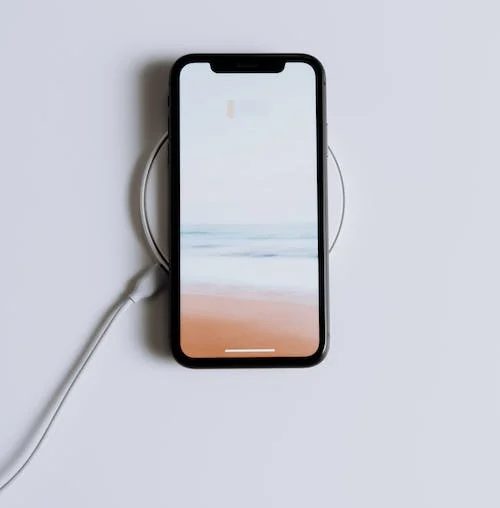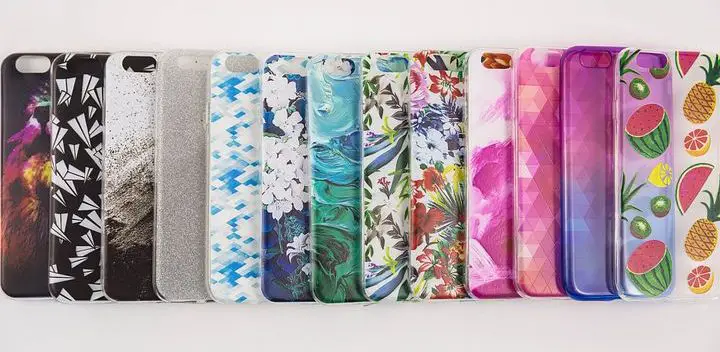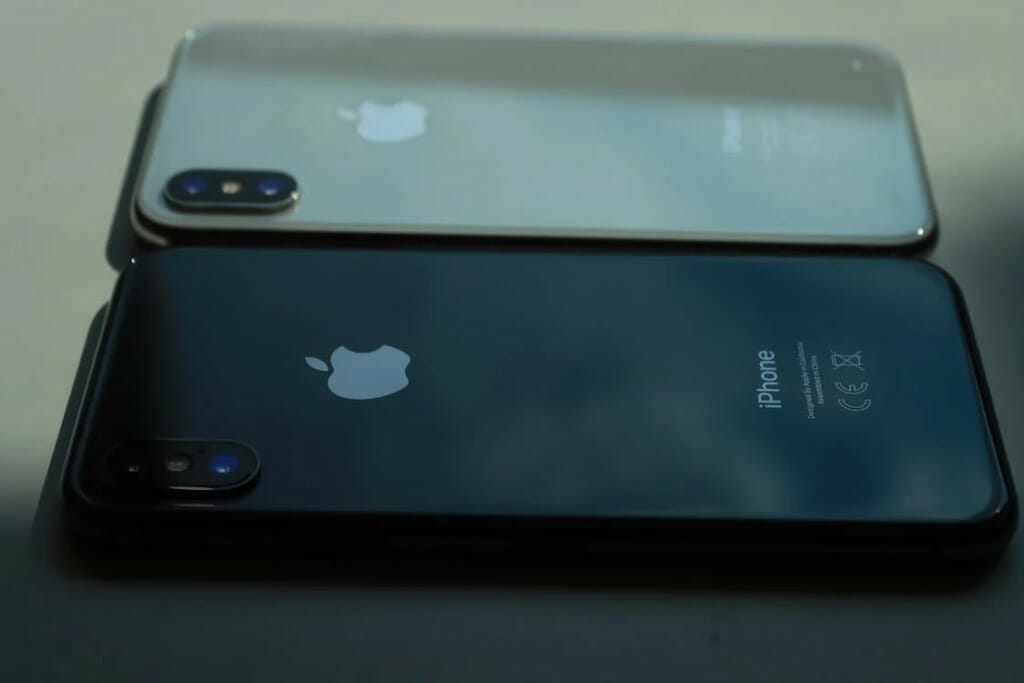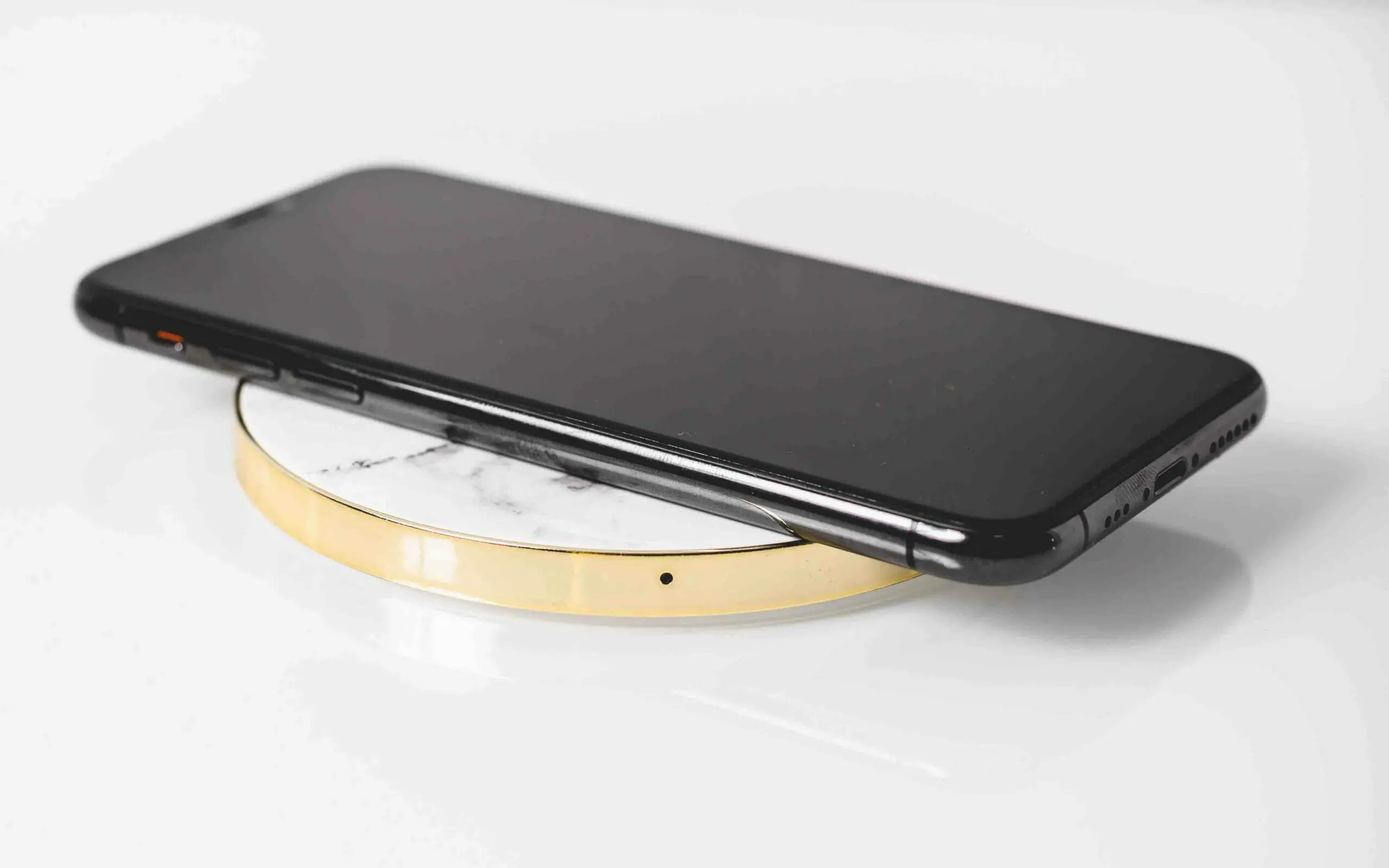If you’re using a case, you may wonder if a wireless charger would still work. The answer to this question differs depending on your case type.
Usually, wireless chargers can work even when a case is on the mobile phone because they don’t require direct contact. In the majority of cases, you don’t need to worry. But the charger might fail to work if the case is too bulky, and if it’s made of metal, it will interfere.
Wireless Charging
Briefly, wireless charging works through a process called electromagnetic induction.
Technically, it is not completely wireless charging because for this charging system to work, the phone must be placed on a wireless charging pad, wired to an outlet.
Regardless, the process involves the transfer of electric charge from the charger to the phone without the aid of wires or direct contact between the two. A receiver coil embedded in the back of the phone picks up the waves. In this sense, it is wireless technology.

Metallic cases or other objects in the way, and any magnetic fields nearby, interfere with the wireless charging process by either slowing down the charging or blocking it completely.
Wireless Charging with a Case
Since wireless chargers work without a charging cable and don’t require direct contact, you can normally use them even when your mobile phone is encased.
Most cases are thin and made of plastic or rubber, so the wireless charger will still work without any issue unless it is a low-quality charger.
Issues only arise if the case is either too bulky, made of metal, or has a battery.
Types of Cases
If you buy a new case and use wireless charging, then you should avoid cases that are too bulky and those made of metal.
Bulky Cases
Usually, you don’t need to worry about the thickness of the case.
The majority of cases are only a few millimeters thick. Usually, this small space between the charger and the phone will not make a difference. Most companies nowadays consider this and design cases that are compatible with wireless chargers.

A potential issue only arises if the case is too bulky, preventing the charger from making the wireless contact necessary for the phone to be able to charge. That said, even some thick cases work just fine, so your only issue could be that you might come across one which is too thick.
If you do have one that is too thick and which makes the charger not work properly or not at all, you should get a new, thinner case. Using it could lead to overheating and damage to the charger and the phone.
Metallic Cases
The material the case is made from does make a difference, particularly if it’s metal.
Metallic cases are a problem for wireless chargers. Since wireless chargers became common, manufacturers have also been switching to using non-metallic backing or shells on phones.
The new wireless charging-compatible shells are typically made from glass or ceramic composites. They might seem fragile, but they are also designed to minimize cracking.
For example, Apple dropped the aluminum shell for its new iPhones for precisely this reason. They are now made of aluminosilicate glass instead. Meanwhile, some Android phone manufacturers have done away with wireless charging instead, preferring to keep looks over providing this functionality.

iPhone cases manufactured since 2017 are compatible with wireless charging.
Battery Cases
Another type of case that could potentially cause an issue with wireless charging is the battery case.
Battery cases are power banks attached directly to the phone. Some of them cause issues with wireless chargers, especially if it’s an older type that is incompatible. However, newer ones, including those made by Samsung and Apple, work fine with wireless chargers.
It May Not Be the Case
If your wireless charger fails to work, even if the case is neither bulky nor metallic, the fault could be the wireless charger or a magnetic field nearby, causing interference.
Low-Quality Chargers
While thin and non-metallic cases generally pose no problem for wireless chargers, it could be that the wireless charger itself is a low-quality one.
Cheap wireless chargers tend to be made of poor materials and, therefore, might not be powerful enough to penetrate through the case. If the wireless charger works without the case on, but not if it’s on, and it’s thin and non-metallic, then try another different wireless charger.
If the better quality charger works fine, the lower quality one is the suspect.
Magnetic Fields
Besides metallic cases, magnetics are another thing to keep a safe distance away from the wireless charging system.
This is because magnetic fields interfere with the charging process. You may have noticed how magnets can interfere if brought close to a television or monitor. Similarly, they will cause distortion and not allow a wireless charging system to function if it is nearby.
If you have a wallet-type case for your mobile phone, it’s best not to keep any magnets inside. It will not only interfere with wireless charging but could also damage anything like a credit card with an RFID chip on it.
Safe Cases
The safest cases that work fine with wireless chargers are thin and non-conductive ones.
Most manufacturers recommend the case to be not more than 3-5 mm thick (~ 0.12-0.19”).
In terms of the material the cases are made from, the safest ones are plastic, rubber, leather, silicone, and other synthetic cases. The commonality is that all of them, unlike metallic cases, are non-conductive.
Removability and Biodegradability
Another thing you may like to consider is how easy the case is to remove and put back on.
If you use a case that is difficult to remove, you must ensure it is compatible with the wireless charger. If it’s easy to remove, you can charge wirelessly with the case off, but ensure you have a screen protector.
If you’re concerned about the biodegradability of mobile phone cases, you should look for cases made from sustainable materials. This allows them to break down quickly and efficiently when disposed of.
Warning: No matter what type of case you use, if you notice the wireless charger overheating, stop using it.
Take a look at some of our related articles below.

